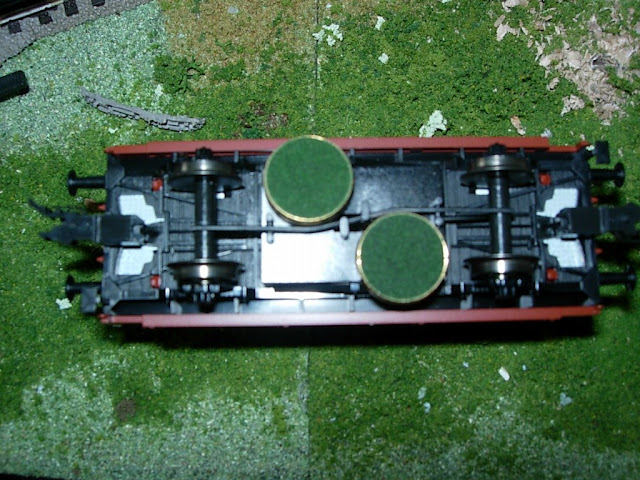The set comes molded in pristine white plastic so I just had to give it a once over with ModelColor 005 Ivory.
 |
| Atlas Picket Fence & Gate Set |
As I mentioned in an earlier article, ModelColor's line of water-based acrylic paints makes for fast cleanup -- just run the paintbrush under running tap water.
 |
| Painting the picket fence with ModelColor 005 Ivory |
Once painted, I had to cut the fence to appropriate lengths.
Gluing the corners with Tamiya Cement I placed the fence so that it fit squarely around the house.
I also had to decide on the positioning of the picket fence's 'gate', relative to the front door of the house. I figured the best placement would be to position it off-center from the front door -- left slightly ajar in this pic.
 |
| Atlas Picket Fence installed. Note hinged door and glue blob on upper window -- whoops! |
I also had to decide on the positioning of the picket fence's 'gate', relative to the front door of the house. I figured the best placement would be to position it off-center from the front door -- left slightly ajar in this pic.
Yes, the door is hinged to the door-frame and can be opened and closed. The house is from a Pola Windmill set I purchased locally.
A little green shrubbery, courtesy of Busch, adds to the realism.
That's what I like about taking pictures of my layout. Somehow, pictures reveal certain details that we may have overlooked.
Like the huge blob of Tamiya cement on the corner of the upper casement window of the house above!
Below is the windmill scene on my layout before I installed the Atlas Picket Fence. Looking at the pic I realise that I still have to cover the base of the windmill with ground cover to hide the plastic base and make it blend into the landscape. Details, details..
 |
| The Pola Windmill set includes the windmill and the two houses I placed on each side. |
More model kit buildings on The Sunny Model Railroad:
Western Homestead Shanty by Life-Like models
Country Chapel by Faller
Sanding Tower Model Kit by Faller
Constance Signal Tower Model Kit by Faller


















 Model Train Help by Robert Anderson
Model Train Help by Robert Anderson 


























